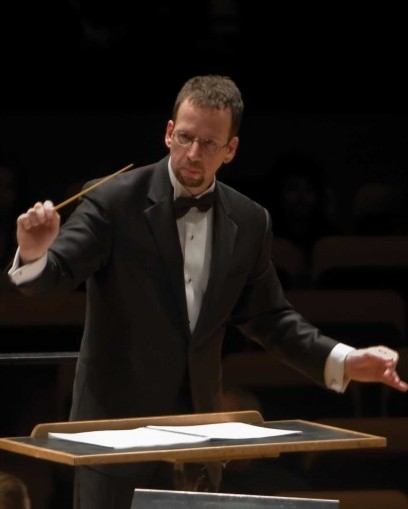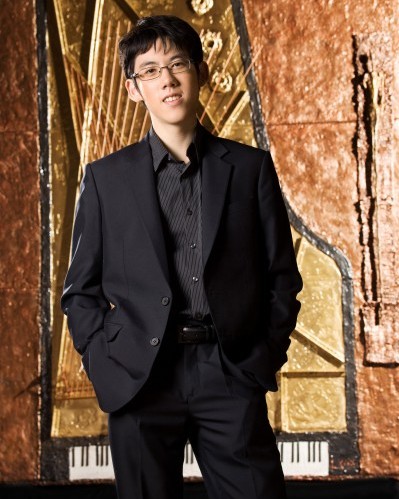On tonight's show:
Colorado Symphony Orchestra

From this season's Masterworks Series, 2009 Van Cliburn Competition Gold Medal Winner Haochen Zhang plays Prokofiev with the Orchestra.
Peter Tchaikovsky: Francesca da Rimini
Sergei Prokofiev: Piano Concerto No. 3 in C major, Opus 26
Scott O’Neil, conductor
Haochen Zhang, piano
recorded 2/20/10
Program Notes
eter Ilyich Tchaikovsky (1840-1893): Francesca da Rimini, Op. 32
When Tchaikovsky was in Paris during the summer of 1876, he wrote to his brother Modeste: “Early this morning I read through the Fifth Canto of Dante's Inferno, and was beset by the wish to compose a symphonic poem based on the love and eternal punishment of Francesca and Paolo.” Dante's story depicts the adulterous love of Francesca and Paolo, who are both murdered by a jealous husband and thence consigned to the second circle of hell, where carnal sinners are continually buffeted by howling winds.
Originally Tchaikovsky wanted to set the story as an opera, but by November 17, 1876, he had completed the symphonic poem. Again, he wrote to his brother: “I have just finished the composition of a new work, a symphonic fantasia...I have worked on it `con amore,' and believe my devotion has been successful.”
Francesca da Rimini was successful when Nikolai Rubinstein introduced it in Moscow on March 9, 1877. Tchaikovsky said he preferred this work “above all the others I've composed in this genre.”
Biographer Edwin Evans describes the work: “It has three phases, of which the central one is by far the most important, as it depicts the narrative of Francesca, the beginning and end of the work providing the background of the Inferno. The agonizing picture brought to mind by the perusal of Dante is unmistakably portrayed in the opening and close of the work. The disconsolate wandering of the lost souls is represented by an andante lugubre, which merges into a veritable whirlwind, allegro vivo. The andante section is full of a haunting melody first played by the clarinet. The subsequent accompanying figures, provided by three flutes, are among the most attractive features of the score. In the end the unhappy pair disappear once more into the whirling throng.”
The work is scored for piccolo, 3 flutes, 2 oboes, English horn, 2 clarinets, 2 bassoons, 4 horns, 2 cornets, 2 trumpets, 2 tenor trombones, bass trombone, tuba, timpani, cymbals, bass drum, gong, harp and strings.
I. Andante--Allegro
II. Theme and Variations: Andantino
III. Allegro ma non troppo
The Third Piano Concerto was begun “by fits and starts” as early as 1911. Prokofiev set it aside, returned to it in 1913, set it aside again and returned to it again in 1916 and 1917. By then the principal themes were outlined, but the work was still unfinished. When he left Russia the following year, the score was in his luggage. He finally completed the Concerto in France during the summer of 1921.
The first performance took place in Chicago on December 16, 1921, with Prokofiev as soloist and Frederick Stock conducting the Chicago Symphony Orchestra. The audience, according to the composer, “did not quite understand” the work. After performances in New York, Paris and London, the Concerto reached the Soviet Union, where it was welcomed with open arms. “What is important,” wrote Boris Asafeyev, “is that Prokofiev has still not cut himself off from his own country. The work throbs with its strength, and radiates the Russian understanding of art's meaning and value.”
For the Chicago première, Prokofiev provided the following description of the work: “The first movement opens with a short, calm introduction...The theme is introduced by unaccompanied clarinet, then taken up by the violins...The violins' passage...leads to the principal theme (on the piano). Development by orchestra and soloist is lively. After a few bars of chords for piano solo, an expressive secondary motive is initiated by oboe with plucked string accompaniment. The piano develops this theme in a bravura passage...In the recapitulation, the two themes are submitted to a brilliant development, ending in an agitated crescendo.
“The second movement is a theme with five variations. The theme is announced by the orchestra. The first variation, by piano in a quasi-sentimental mood, ends in a prolonged chain of trills, while the orchestra repeats the theme. The second and third variations...occur in brilliant piano figurations, while snatches of the theme appear on all sides in the orchestra. The fourth is calm and dreamy. The fifth...leads to the reappearance of the basic theme in a setting of delicate chordal decorations from the piano.
“In the third movement...bassoons and strings state the theme with gusty interruptions from the piano. Orchestral development of the theme leads to a clash of tonalities. The piano takes up the first theme again and develops it to a powerful climax. After a slackening of rhythm, new material is introduced in the woodwind. The piano answers with a theme humorous in character. This episode receives an extensive development, which leads to a brilliant coda.”
The Concerto is scored for solo piano, piccolo, 2 flutes, 2 oboes, 2 clarinets, 2 bassoons, 4 horns, 2 trumpets, 3 trombones, timpani, cymbals, castanets, tambourine, bass drum and strings.
©2010 Charley Samson
